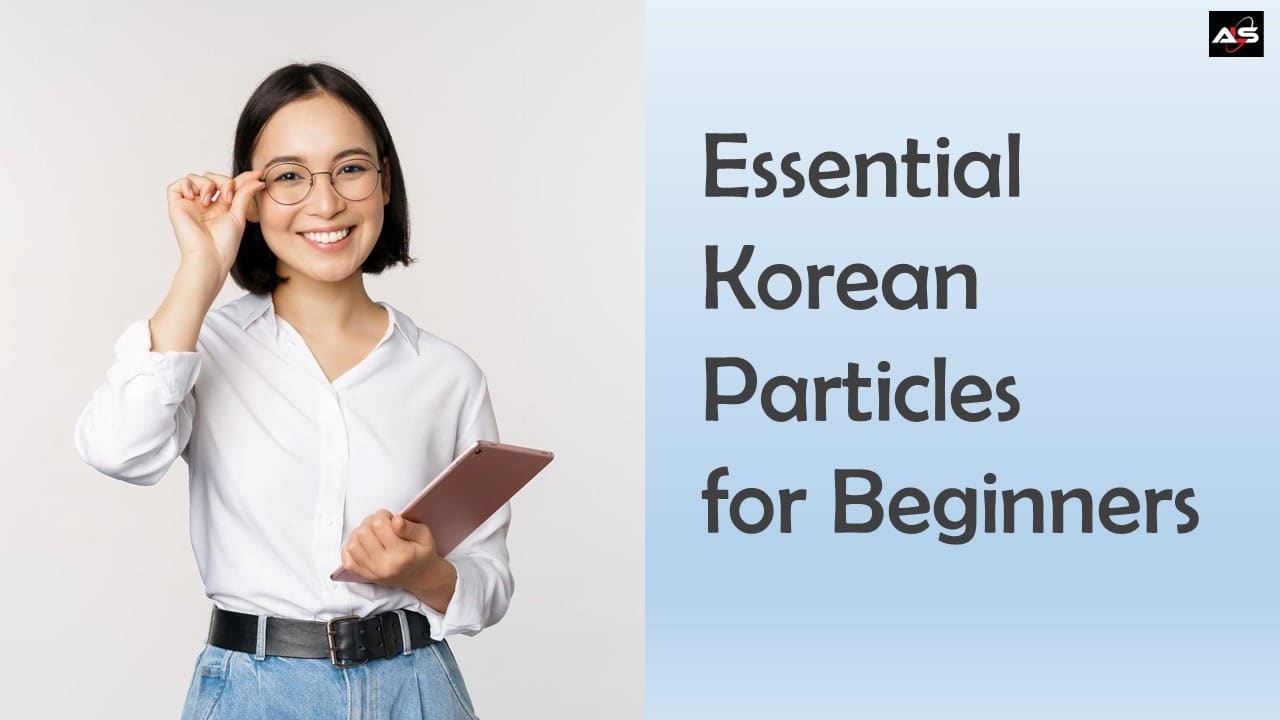10 Essential Korean Particles for Beginners
Korean grammar includes the use of particles that mark a topic, a subject, an object, or a location. This aspect of Korean grammar does not exist in English. In your very first Korean class, most likely you will encounter one or more of these particles. In this article, you will learn ten essential Korean particles:
- topic particle 은/는
- subject particle 이/가
- object particle 을/를
- locative particle 에/에서
- time particle 에
- instrument particle 으로/로
- direction particle 으로/로
- goal particle 한테
- source particle 한테서
- noun-connecting particle 과/와
Topic Particle 은/는
- 박영일은 한국 사람이에요.
bag yeong ir eun hangug saram ieyo
(Park Young-Il is Korean.) - 김민지는 한국 사람이에요.
gim min ji neun hangug saram ieyo
(Kim Min-Jee is Korean.)
Both 은 eun and 는 neun are topic particles. The difference is that 은 eun follows a consonant whereas 는 neun follows a vowel.
Subject Particle 이/가
- 한국어 수업이 재미있어요.
hangugeo sueob i jaemiisseoyo
(Korean class is interesting.) - 커피가 맛있어요.
keopi ga masisseoyo
(The coffee is delicious.)
Both are subject particles. The difference is that 이 i follows a consonant whereas 가 ga follows a vowel.
- 제니 왕은 한국사람이 아니에요.
jeni wang eun hangug saram i anieyo
(Jenny Wang is not Korean.) - 저는 제니가 아니에요.
jeo neun jeni ga anieyo
(I am not Jenny.)
The particle 이/가 is also used in negative sentences as shown above.
Object Particle 을/를
- 저는 초콜릿을 먹어요.
jeo neun chokollit eul meogeoyo
(I am eating chocolate.) - 라이언은 숙제를 해요.
raieon eun sugje reul haeyo
(Ryan is doing homework.)
Can you now guess the rule of when to use 을 eul and when to use 를 reul? That’s right! Use 을 eul when the object ends in a consonant and use 를 reul when the object ends in a vowel. In conversation, particles are usually dropped.
A word on Korean sentence order. You may have noticed that the sentence order is different from English. In English, a sentence is in the order of Subject-Verb-Object. However, in Korean, a sentence is in the order of Subject-Object-Verb. Subject may also be dropped if it is understood from the context. For example:
크리스 : 뭐해요?
keuliseu : mwo haeyo
(Chris : What are you doing?)
민지 : 초콜릿을 먹어요.
minji: chokollit eul meogeoyo
(Min-Jee : Eating chocolate.)
In the above dialogue, Min-Jee omits 저는 jeo neun ( I am) as it is understood from the context who the subject is.
Locative Particle 에/에서
- 은행은 도서관 옆에 있어요.
eunhaeng eun doseogwan yeop e isseoyo
(The bank is next to the library.) - 저는 대학에 가요.
jeo neun daehag e gayo
(I am going to the university.)
The first 에 particle is for a static location. The second is for a destination or a goal.
- 우리는 공원에서 운동해요.
uri neun gongwon eseo undong haeyo
(We exercise at the park.)
Particle 에서 is used for a dynamic location.
In Korean grammar, the location adverb is placed before the verb.
Time Particle 에
The time particle and the locative particle are the same in Korean, both use 에.
- 우리는 8시에 아침을 먹어요.
uri neun yeodeol si e achim eul meogeoyo
(We eat breakfast at 8 o’clock.) - 저는 월요일에 수영해요.
jeo neun woryoil e suyeong haeyo
(I swim on Monday.)
Instrument Particle 으로/로
- 저는 자전거로 학교에 가요.
jeo neun jajeongeo ro haggyo e gayo.
(I go to school by bicycle.) - 볼펜으로 쓰세요.
bolpen euro sseuseyo
(Please write with a ballpoint pen.)
The instrument particle is used to indicate the mean of transportation (as in sentence 14), or the mean by which an action is performed (as in sentence 15). 으로euro is used for a noun ending in a consonant and 로 ro is used for a noun ending in a vowel or the consonant /ㄹ/.
Direction Particle 으로/로
- 오른쪽으로 가세요.
oreunjjog euro gaseyo
(Please go to the right.) - 도서관 뒤로 오세요.
doseogwan dwi ro oseyo
(Please come to the back of the library.)
으로 euro is used after a noun ending in a consonant, whereas 로 ro is used after a noun ending in a vowel or the consonant /ㄹ/.
Goal Particle 한테
- 제임스가 메리한테 꽃을 주었어요.
jeimseu ga meri hante kkoch eul jueosseoyo
(James gave flowers to Mary.) - 리사가 제니한테 편지했어요.
lisa ga jeni hante pyeonji haesseoyo.
(Lisa wrote a letter to Jenny.)
The particle 한테 hante is used with “giving or sending” verbs.
Source Particle 한테서
- 누구한테서 초콜릿을 받았어요?
nugu hanteseo chokollit eul badasseoyo
(Who did you get the chocolate from?)
The particle 한테서 hanteseo is used with “receiving” verbs.
Noun-Connecting Particle 과/와
저는 재킷과 스커트를 샀어요.
jeo neun jaekit gwa seukeoteu reul sasseoyo
(I bought a jacket and a skirt.)
저는 야구와 농구를 좋아해요.
jeo neun yagu wa nonggu reul joahaeyo
(I like baseball and basketball.)
과 gwa is used after a noun ending in a consonant, whereas 와 wa is used after a noun ending in a vowel.


